How to know if a surface treatment formes a non porous film or if it « only » makes the surface water repellent without clogging the pores : drop test, 2nd part
Amongst the treatments that render a surface water repellent it can be useful to distiguish the treatments that form a tight, non porous film from those that form very thin molecul layers on the surfaces of the solid parts of the material making them water repellen.
In general, water repellent substances « like » organic solvents: in practice, if a drop of an organic solvent is put on a water repellent but porous material it will be absorbed into the porosity by capillarity.
Hence, to find out wether a water repellent surface is porous or not, it is adequate to make first the water drop test described in the previous trick and then the test with a drop of ethanol whos explanation follows here after.
1 – Water drop test: check if the materal is water repellent according to points 1 and 2 of the previous trick (water repellent surface?)
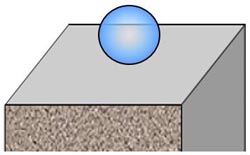 highly water repellent surface |
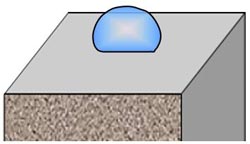 less water repellent surface |
2 – Test with a drop of ethanol: check if the water repellent surface is porous or not carefully bring a little drop of ethanol on the material surface you would like to test
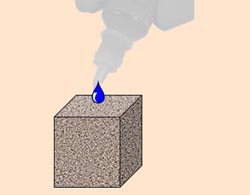 |
3 – Evaluation of the result
– the drop of ethanol wets the material and is simultaneously absorbed by capillarity if the surface has remained open and porous (a);
– if the pores of the materials surface are clogged, the drop of ethanol will wet the surface and spread but not be sucked in (b). Gradually the drop will disapear by evaporation (Caution: if it is very warm or windy this drying of the drop can be very fast).
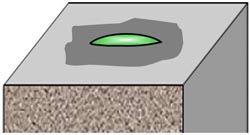 (a) water repellent, porous material |
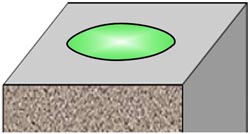 (b) water repellent, non-porous material |
Droptest, continuation: in our next trick we will explain, how you can recognise former water repellent surface treatments…